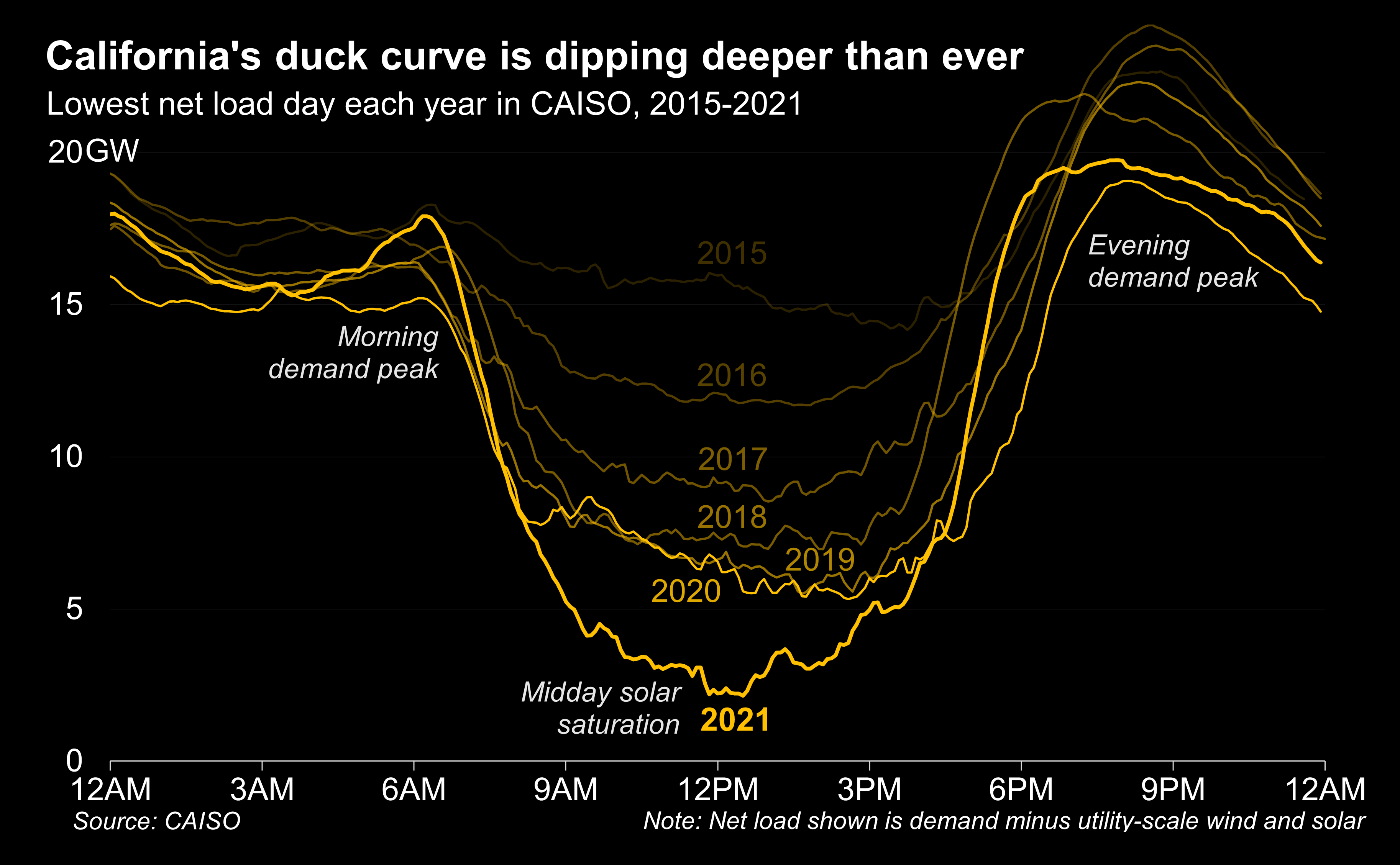
You all know people who are always going to do something great but never make it happen. Consider the hapless New Year’s resolution for which someone plans to lose weight. They successfully diet between a cheeseburger and fries for lunch and a mound of pasta with rich sauce for dinner: the “diet” lasted a few hours and accomplished nothing.
The empty New Year’s resolution de jure for decarbonization is net zero, where similarly, there is excess at times and shortages at other times. Whether it’s net-zero-energy building design or net-zero-carbon electricity production, the achievement is easy and similarly not helpful. The reason is simple.
Net Zero
Net-zero simply means a building generates as much electricity as it uses, or a utility generates as much renewable electricity as it sells. The diet ends with a towering hunk of Butterfinger cheesecake when the wind stops blowing and the sun doesn’t shine. Call up the natural gas or, eeek, coal power generation to meet loads.
The Duck Challenge
As an illustration, see California’s duck curve below after it has grown up from an artist’s smooth-curved cartoon to actual net energy required. Once the 2,000 MW Diablo Canyon nuclear facility is shut down in 2024, the net load will all be made up of fossil-fueled sources with a crumb of storage here and there. The US has a whopping storage capacity to keep the lights on for 26 seconds[1][2]. Why only 26 seconds? Because battery storage costs a fortune to buy and operate, and in some cases, it’s not even allowed due to fire codes. In case you missed it, be sure to get the details in last week’s highly rated discussion about energy storage with thought leader Doug Houseman from Burns and McDonnell.
Per the duck curve, the baseload is about 17 GW, two of which are covered by zero-carbon Diablo Canyon, remember.
The calls for zero carbon by 2050 remind me of the allure of artificial intelligence. I.e., if we can get a trillion transistors on a circuit and string some magic number of them together, the glob of circuits will acquire consciousness. The glob will lie and deceive, covet other machines and humans, and seek to defeat homo sapiens for world superiority.
Zero carbon isn’t that extreme because it can be achieved from a combination of costs: capital cost, inconvenience, security, safety (Texas example), and energy cost. Instead, I call for moderation and optimization, balancing those things while adapting as needed for some (gasp) carbon emissions. Let’s go back to the diet example. Do people diet so they can look like emaciated runway models? I don’t think so. They want to be healthier and feel better physically and emotionally about themselves. There you are. That’s the way to view decarbonization. We’re aiming for someplace that’s reasonable and doesn’t make us miserable and broke in the process.
HOWEVER, in a brand-new surprise to me, White House advisor Gina McCarthy, last week, said the “clean energy standard to boost green energy will include nuclear power and carbon capture.” Whoa! Efforts to fully decarbonize without nuclear and fossil-energy production are simply not serious. Now things appear to be getting serious. By the way, I was pleased to see in that article that Mayor Pete described how snow melting in bathtubs was used for toilet water in Texas and that it isn’t acceptable. Good call!
Decarbonization will require a massive balancing act including some of the following, in order from best to worst:
- Efficiency and load management; about two orders of magnitude less expensive than electricity storage and no NIMBY
- Smart design to simultaneously meeting cooling and heating loads with one energy supply rather than two; i.e., energy recovery
- Thermal storage: similar to efficiency, but is really only good for a 24-hour cycle
- Using the right energy source for the job: i.e., electrification, or in some cases, natural gas
- Combined heat and power
- Adding transmission: expensive and subject to NIMBY
- Electricity storage, which for anything of substance would be storing potential energy via pumped hydro, or raising and lowering weights, either vertically with stacked concrete or linearly on a mountainside with rail cars: expensive, double NIMBY
Want a deep dive into these topics and more, including policy and pricing, join my team for a deep dive in AESP’s Spring Training, May 19, 2021. Click below to find a 100-word course description, and while you are there, explore other courses. Get on it!
[1] Utility Dive
[2] U.S. Energy Information Administration



